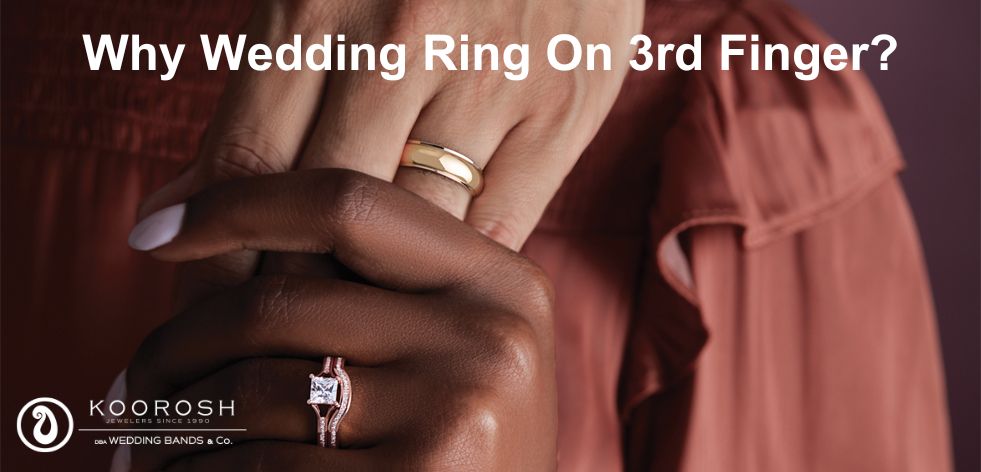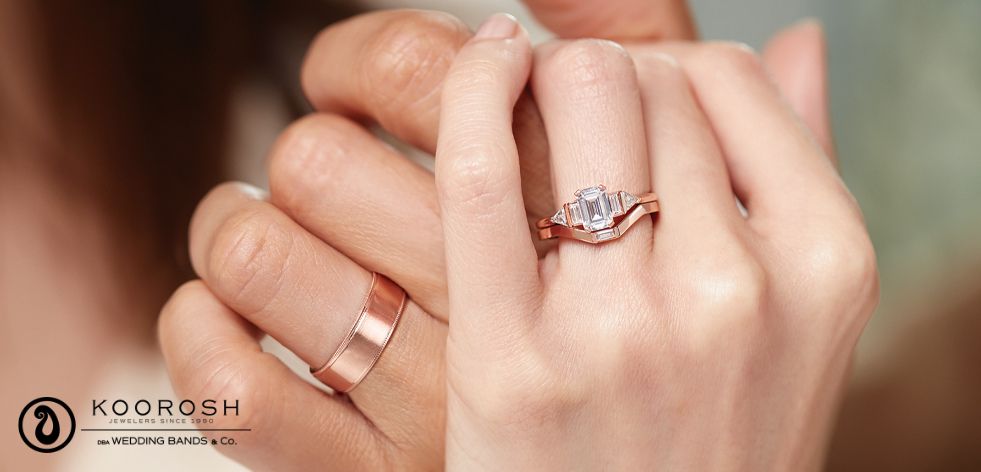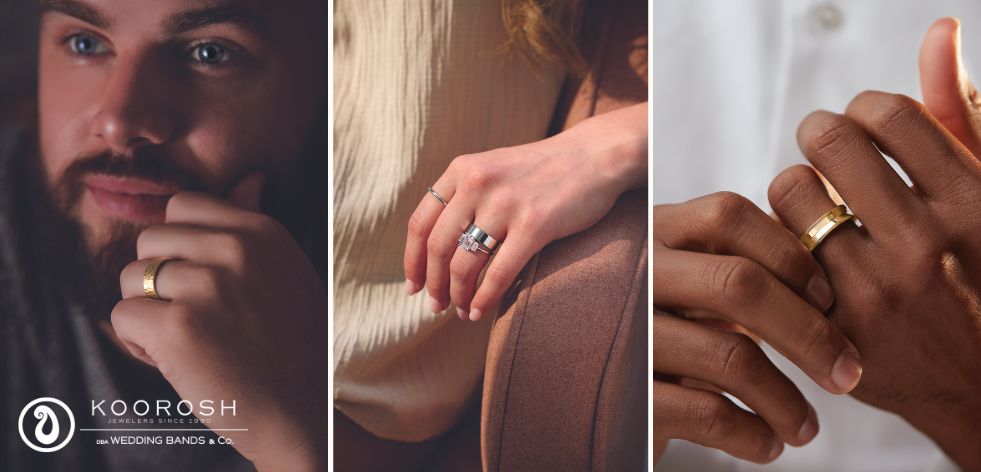Why Wedding Ring On 3rd Finger?
Posted by Koorosh Daneshgar on Feb 24th 2024

Where wedding ring goes?
Wedding rings are a universal symbol of love, commitment, and loyalty. They are a physical representation of the emotional bond that exists between two people who have decided to spend the rest of their lives together. In many cultures, wedding rings are traditionally worn on the third finger of the left hand, and there are many theories about why this is the case. In this blog, we will explore some of the most popular theories behind the tradition of wearing a wedding ring on the third finger of the left hand.
One of the oldest and most popular theories about why wedding rings are worn on the third finger of the left hand comes from ancient Egypt. The Egyptians believed that the vein in the third finger of the left hand, known as the "Vena Amoris," or the "vein of love," ran directly to the heart. They believed that by wearing a ring on this finger, it would symbolize the eternal love that existed between two people, and that the ring would be a constant reminder of that love.
Another theory about the tradition of wearing a wedding ring on the third finger of the left hand comes from ancient Rome. The Romans believed that the third finger of the left hand was the "Anulus Pronubus," or the "ring finger," which was believed to have a direct connection to the heart. This belief was based on the idea that a vein connected this finger directly to the heart. Therefore, when a couple exchanged rings on this finger, it was seen as a sign of their eternal love and commitment.
In many Christian wedding ceremonies, the priest or minister will say a prayer over the couple's rings before they are exchanged. During this prayer, the priest or minister will bless the rings and ask that they be a reminder of the couple's love for each other. In some Christian traditions, the wedding ring is also seen as a symbol of the Holy Trinity, with the band representing the Father, the setting representing the Son, and the stone representing the Holy Spirit.

In many Western cultures, wedding rings are worn on the third finger of the left hand because of a belief that dates back to medieval times. During this period, it was believed that the left hand was the "sinister" hand, and that wearing a wedding ring on this hand would ward off evil spirits. The third finger of the left hand was chosen because it was believed to be the weakest finger on the hand, and therefore the most in need of protection.
While there are many theories about why wedding rings are traditionally worn on the third finger of the left hand, the truth is that the tradition likely has many different origins. However, regardless of where the tradition comes from, the sentiment behind it remains the same: a wedding ring is a symbol of love and commitment, and wearing it on the third finger of the left hand is a way of keeping that love and commitment close to the heart.
In addition to the symbolism behind wearing a wedding ring on the third finger of the left hand, there are also many practical reasons why this tradition has endured. For example, wearing a wedding ring on the third finger of the left hand allows for maximum mobility of the fingers, as it is less likely to interfere with daily tasks than a ring worn on another finger. Additionally, because the third finger of the left hand is typically smaller than other fingers, it is easier to find a ring that fits snugly and comfortably.
Why wedding ring on 4th finger?
The tradition of wearing wedding rings on the fourth finger of the left hand has deep roots in Hindu culture. In Hindu tradition, people believe that a vein connects this finger to the heart. This connection symbolizes the deep emotional connection between partners.
Furthermore, the fourth finger represents the planet Sun, symbolizing warmth, love, and vitality. Wearing a wedding ring on this finger signifies a strong commitment to marriage. It also symbolize a lasting bond, rooted in cultural beliefs.

Which wedding ring finger?
It is important to note that while the tradition of wearing a wedding ring on the third finger of the left hand is deeply rooted in many cultures and has endured for centuries, there is no rule that says you must follow this tradition. In fact, many modern couples choose to wear their wedding rings on different fingers or even on different hands altogether.
Ultimately, the decision of where to wear your wedding ring is a personal one that should be based on your own preferences, comfort, and cultural or religious beliefs. Whether you choose to follow the traditional practice of wearing your wedding ring on the third finger of your left hand, or opt for a different finger or hand altogether, the important thing is that the ring serves as a symbol of the love and commitment that exists between you and your partner.
In conclusion, the tradition of wearing a wedding ring on the third finger of the left hand is a longstanding practice that has endured for centuries across many cultures and traditions. While there are many theories behind why this tradition exists, the sentiment behind it remains the same: a wedding ring is a symbol of love and commitment that is worn to keep that love and commitment close to the heart. However, whether or not you choose to follow this tradition is entirely up to you and should be based on your own personal beliefs and preferences. Regardless of where you choose to wear your wedding ring, the important thing is that it serves as a reminder of the love and commitment that exists between you and your partner.
Address: 43 E Oak St FL 2, Chicago, IL 60611
Phone: +1 312-920-0726

